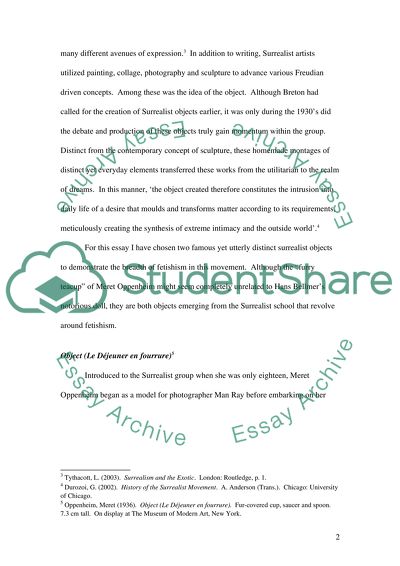Cite this document
(“Fetishism and the Surrealist Object Essay Example | Topics and Well Written Essays - 1750 words”, n.d.)
Fetishism and the Surrealist Object Essay Example | Topics and Well Written Essays - 1750 words. Retrieved from https://studentshare.org/visual-arts-film-studies/1530975-fetishism-and-the-surrealist-object
Fetishism and the Surrealist Object Essay Example | Topics and Well Written Essays - 1750 words. Retrieved from https://studentshare.org/visual-arts-film-studies/1530975-fetishism-and-the-surrealist-object
(Fetishism and the Surrealist Object Essay Example | Topics and Well Written Essays - 1750 Words)
Fetishism and the Surrealist Object Essay Example | Topics and Well Written Essays - 1750 Words. https://studentshare.org/visual-arts-film-studies/1530975-fetishism-and-the-surrealist-object.
Fetishism and the Surrealist Object Essay Example | Topics and Well Written Essays - 1750 Words. https://studentshare.org/visual-arts-film-studies/1530975-fetishism-and-the-surrealist-object.
“Fetishism and the Surrealist Object Essay Example | Topics and Well Written Essays - 1750 Words”, n.d. https://studentshare.org/visual-arts-film-studies/1530975-fetishism-and-the-surrealist-object.


